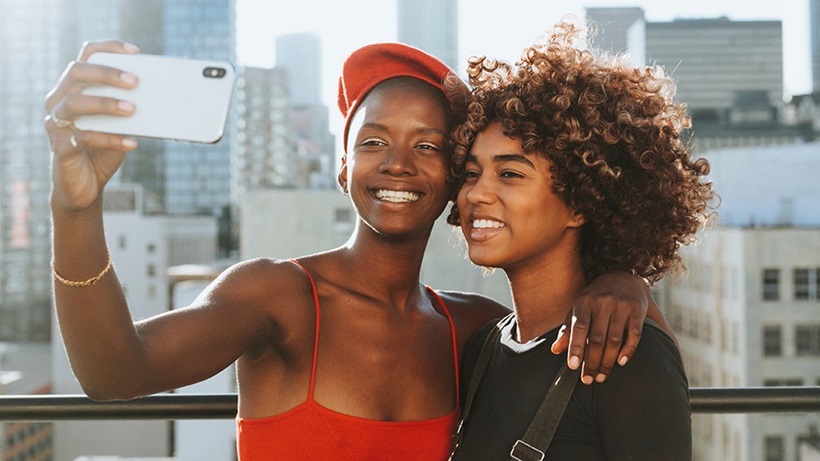Fri 11 August 2023:
If you’ve considered sending a sexy photo, you’re not alone: research shows that up to 15% of adolescents and 48% of adults have sent sexually explicit texts or images.
There’s no shame in sending intimate photos to a partner, but it’s not without risk. If someone betrays your trust and shares them online or with others, it is a form of abuse that can lead to lifelong psychological harm.

It may also soon be illegal. New provisions in the UK’s online safety bill currently making its way through parliament will make it a criminal sexual offence to share private, sexual images without consent. They will also make it a crime to “cyberflash” someone – sending an unsolicited nude.
If your photos are already out there, you may be wondering what legal rights and protections you have.
As I’ve found in my research, there is little you can do to force a website to take your images down. Websites aren’t generally held responsible for content uploaded by users, even when sharing the content is illegal. Many websites where images are shared are hosted outside of the UK, meaning they’re not covered by UK laws (or courts).
Some survivors of abuse have taken legal action to stop the distribution of an image, but this is expensive and time consuming.

There is a legal workaround if you took the image yourself. In that case, you own the copyright and can ask a website to remove the image, as it is infringing your copyright. Sending takedown notices is free, and most websites have a copyright request form somewhere on their site.
This is generally quite successful, but it does have a few downsides. It requires you to give your real name (this might be why Banksy doesn’t sue for copyright infringement).
You need to send a separate request to each website, so it can be time-consuming, and requires monitoring. You may want to set up an email address specifically for image takedown requests. Finally, if the website doesn’t comply with your request, your next step is to sue them, which is costly and unrealistic for most people.

Protecting children
If you’re under 18 when images are taken, they are completely and totally illegal, even if you take them yourself and you’re now over 18. “Pseudo-photographs” of anyone under 18 are illegal under the Protection of Children Act 1978, so images created with AI are treated the same as real photos under the law. And possessing such images is a criminal offence under the Criminal Justice Act 1988.
It might not feel like there’s a huge difference between the day before and the day of your 18th birthday, but in law, there is a change in status from child to adult. You should avoid taking or sending intimate photos at all if you’re under 18. If anyone sends you an intimate photo of someone under 18 you should delete it immediately, including from your deleted folder.
If pictures end up online, you can use Report Remove, an online tool from the National Society for the Prevention of Cruelty to Children, to report them, even if they aren’t of you.

Sharing safely
Taking intimate photos and sharing them with consent can be fun, sexy and safe. But sharing photos of others without their consent can be incredibly harmful, and it is (or will soon be) illegal.
We’ll never be able to stop all forms of abuse, but there are steps you can take to protect yourself, and lessen the number of people impacted by image-based sexual abuse.
1. Selfies are safer
If you’re taking photos, take them yourself. Taking a selfie, and owning the copyright, means you can ask websites to take copies down by sending a takedown notice or using a website’s dedicated reporting form.

2. Choose your app wisely
If you’re sending sexy photos, set them to “view once” or put a time limit on them, or use an app that deletes images, like Snapchat. This won’t protect you from screenshots, but it does lessen the risk of someone keeping your images.
Some messaging apps are safer than others. End-to-end encrypted messages (like those in WhatsApp but not on some social media apps) means you don’t need to worry about your messages being intercepted by a third party. Think about whether messages are backed up and stored somewhere, and how secure that is.

3. Stay anonymous
Keep your face, or any identifying features, out of the photos. If they are shared or posted, deniability might help to lessen any negative impacts on you.
The increasing ease of creating “deepfake” nudes or pornography is complicating this. There are currently no existing criminal provisions around creating or sharing deepfakes, or nudifying apps. This may change slightly with the online safety bill.

4. Keep your photos to yourself – and delete the rest
If you’ve had a romantic or sexual liaison which involved photos, and the relationship has ended, delete the images and ask them to do the same. You wouldn’t expect to keep having sex with your ex, why should you keep their photos?
And never, ever share nude photos without the explicit consent of everyone depicted in them. Even if they’ve sent you an unsolicited penis picture, don’t share it onwards – just delete it.
If you find a private photo of yourself online, contact the Revenge Porn Helpline, or Report Harmful Content for help on requests for removal of images and videos.
![]()
Aislinn O’Connell
Her current research projects focus on aspects of technology-based violence, including legal regulation of stalkerware, takedown mechanisms for images online, and tortious remedies for image-based sexual abuse.
______________________________________________________________
FOLLOW INDEPENDENT PRESS:
TWITTER (CLICK HERE)
https://twitter.com/IpIndependent
FACEBOOK (CLICK HERE)
https://web.facebook.com/ipindependent
Think your friends would be interested? Share this story!





